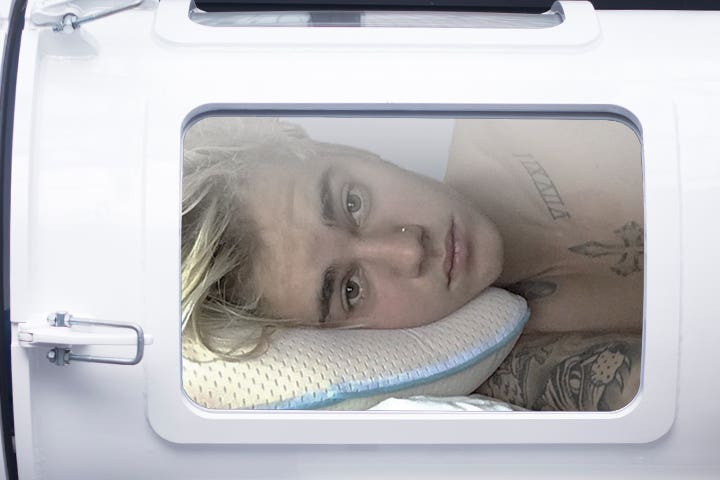Oxygen Chamber Price: Oxy Therapy vs Portable Chamber Cost

There are two categories where we shall discuss oxygen chamber price:
- Oxygen Therapy Price Per session
- Portable Oxygen Chamber Price
These are two different things that many people do not know. The point number 1 solely discusses the treatment centers which offer oxygen therapy services. Here, such centers can charge you $75 per session. It can lead to $100 too.
Similarly, if you are planning to buy a new portable oxygen chamber, the price is quite higher. We can say a new oxygen chamber price in 2021 can be up to $47, 00.
Why do we take oxygen chamber therapy?
Oxygen therapy is prescribed by a physician, who determines the specific concentration, method and volume in liters/min. But when oxygen is an emergency measure, the nurse can initiate therapy on their own. Oxygen therapy is indicated for patients presenting with hypoxia (low oxygen concentration or low oxyhemoglobin saturation in arterial blood).
General perception about oxygen chamber price
Oxygen therapy is the delivery of oxygen to the patient. The aim of oxygen therapy is to prevent or reduce hypoxia. Any patient with inadequate tissue oxygenation can receive additional oxygen from controlled oxygen delivery.
5 check principles before taking oxygen chamber therapy
Oxygen chamber price is only a supportive measure and should be common only when indicated. As with any medication, the dose or oxygen levels should be continuously monitored. The nurse needs to check the doctor's orders daily to determine the indicated oxygen concentration and should apply the same 5 check principles as in giving the patient medication.
- Point
Oxygen therapy is indicated for patients presenting with hypoxia (low oxygen concentration or low oxyhemoglobin saturation in arterial blood).
- Lack of oxygen can be common:
- Moreover, respiratory obstructions: drooling, foreign body, spasm, edema.
- Similarly, restriction of thoracic activity: respiratory muscle paralysis due to nerve damage, scoliosis, thoracic trauma causing rib fracture, pneumothorax, pleural effusion.
The main symptoms of hypoxia:
Impaired function of the nervous system involved in the respiratory process: encephalitis, traumatic brain injury, cerebrovascular accident. Moreover, oxygen helps in diffusion of air in the lungs: pneumonia, acute pulmonary edema, emphysema, and bronchopneumonia.
Diseases that disturb blood oxygen transport and circulation: anemia, heart failure, congenital heart disease. Symptoms of hypoxia depend on the patient's age, health, current medical condition, and chronic illness. Signs of hypoxia include:
- Rapid pulse.
- Rapid, shallow, difficult breathing.
- Restlessness, dizziness.
- Similarly, the nose bulges.
- Moreover, contraction of the intercostal space and the sternum.
- Purple green.
Principles of conducting oxygen therapy
- General principles
Use the right dose, the right method: Use the right dose and method as prescribed by the doctor to ensure adequate oxygen supply to the patient. Like any medicine, oxygen is not completely harmless to the patient. Furthermore, oxygen concentrations greater than 50% can lead to oxygen poisoning. Before buying, you need to check latest oxygen chamber price.
The lowest oxygen concentration necessary to achieve the desired arterial oxygen saturation should be common. Prevention of infection: oxygen is a favorable environment for bacteria to grow quickly. Similarly, it is necessary to ensure aseptic stage during oxygen supply.
Ensure safety while using oxygen therapy
Prevention of respiratory dryness: in the process of providing oxygen to the patient, it is necessary to moisten the oxygen before entering, and give the patient more water if possible. Safety principles: it is important to ensure safety while using oxygen therapy, because it can easily cause an explosion.
- Oxygen delivery device
Generally, we measure oxygen chamber price in two systems: a transportable system such as a container, a bag, and a closed system in the wall. Oxygen supplied from a tank or wall system is dry oxygen. This dry gas dehydrates the respiratory mucous membranes.

Moreover, oxygen should be moistened before entering the patient's airways, especially when the inspiratory volume is above 2 liters/min.
Limitations in oxygen chamber price
An oxygen delivery device includes:
- a nasogastric tube
- nasal cannula
- Mask
- oxygen tent
- T-tube or collar
Basically, the nasal cannula is a smooth and flexible tube about 40 cm long. Moreover, the distal end of the tube has many small openings through which oxygen can escape.
The normal rate of oxygen flow through the nasal tube is between 1 and 6 liters per minute. Similarly, Fi02 ranges from 24% to 40%. Nasal catheters have the advantage of being available to any patient of any age, inexpensive and disposable. However, the nasal cannula has limitations in use. Moreover, the oxygen chamber price varies according to concentration.
The patient tends to swallow air
Consists of a long tube with two curved 0.6 - 1.3cm branches that are fixed to the nostrils. Each side of the tube connects to the oxygen supply tube. Generally, the canun usually holds securely around the patient's head or under the chin.
Generally, it provides relatively low oxygen concentrations (24-44%) at a volume of 2-6 liters/min. When the oxygen volume is above 6 liters/min, the patient tends to swallow air and the pharyngeal mucosa is easily irritated.
Types of oxygen chamber price in the market
Most masks are made of flexible plastic that can be attached to the face. They held at the patient's head with elastic bands. Some have metal clips and easy to bend over the nose bridge for a tighter fixation. Furthermore, there are several holes in the side of the mask to allow the escape of C02.
To prevent the patient from re-inhaling C02 when wearing a mask, the minimum oxygen dose is 5 liters/minute. Moreover, some respirators have reservoir bags. Similarly, it provides a higher concentration of oxygen to the patient. The rest of the breathing air will go into the bag.
Importance of Mask
A simple oxygen chamber price guide provides an oxygen concentration of 40 - 60%, corresponding to a volume of 5-8 l / min. Masks contraindicate for patients with C02 retention because the condition may worsen. The partial re-inspiratory mask delivers 40-60% oxygen at a volume of 6-10 liters/min. The attached oxygen bag allows the patient to breathe in about one-third of the exhaled air combined with oxygen.
The partial re-inhalation bag does not provide acute support during inspiration to avoid C02 generation. If this occurs, the volume of oxygen l/min should be optimal.
Conclusion
The non-rebreathing oxygen chamber price guide provides the highest oxygen concentration, using a non-rebreathing bag; the patient only breathes air from the bag. The check valve on the mask and between the reserve bag and the mask prevents room air and patient exhaled air from entering the bag.
To avoid accumulation of C02, the sac is not completely flattened during inspiration. If it is, the nurse should increase the inspiratory volume.





